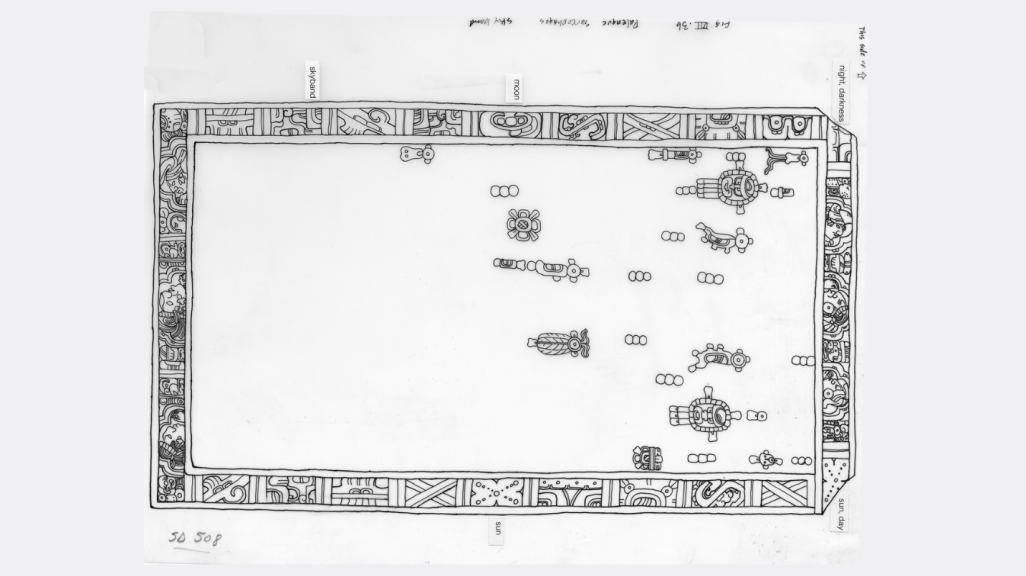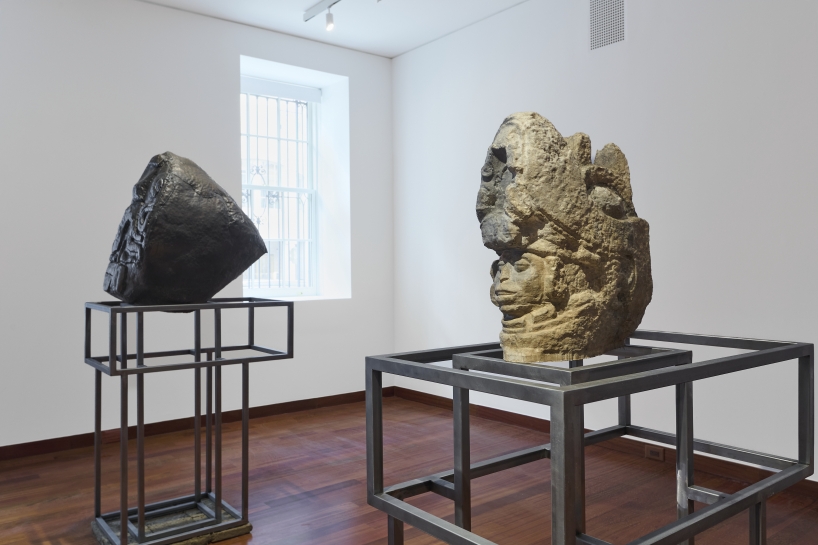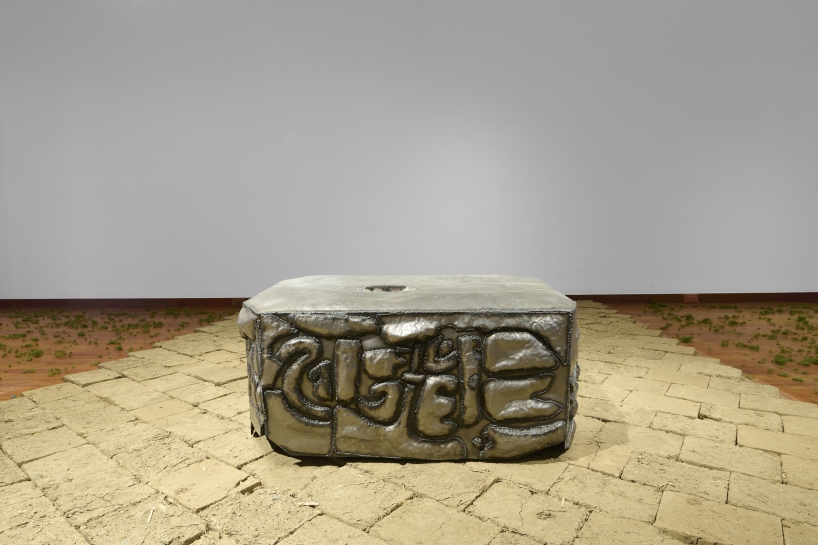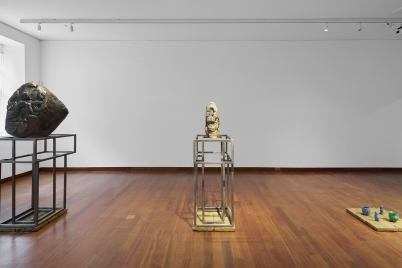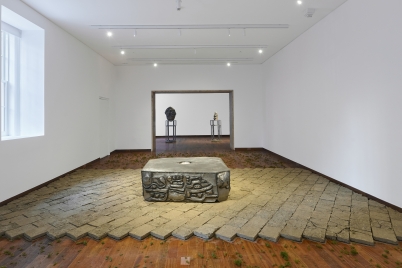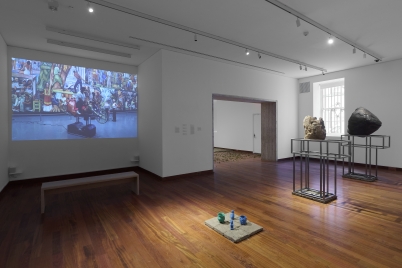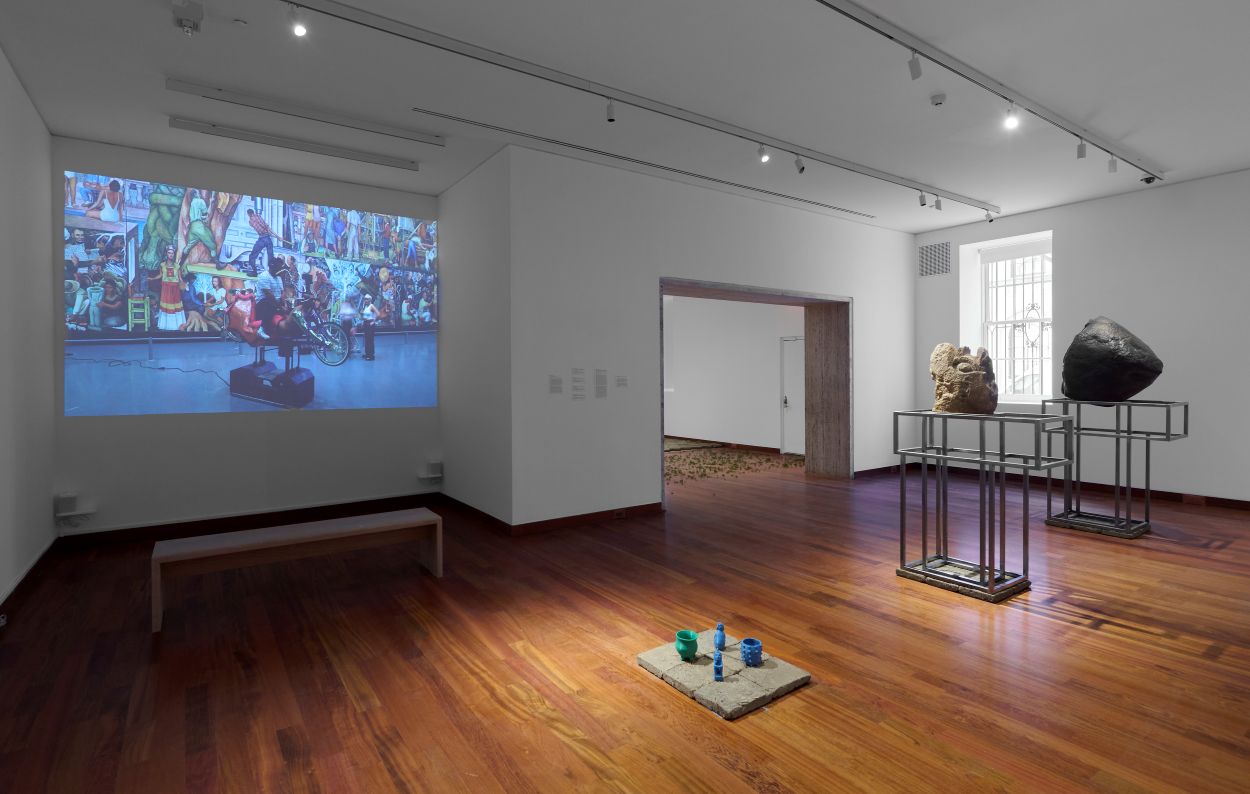Beatriz Cortez x rafa esparza: Earth and Cosmos
On view:
through
Beatriz Cortez x rafa esparza: Earth and Cosmos
Art at Americas Society is pleased to present Beatriz Cortez x rafa esparza: Earth and Cosmos, an exhibition that highlights the ongoing conversations and collaborations between the Los Angeles-based artists Beatriz Cortez (b.1970, San Salvador) and rafa esparza (b.1981, Pasadena).
Cortez and esparza have over the years engaged in conversations about ancient and contemporary ideas of the Earth, the cosmos, the underworld, and the knowledge developed by ancient Indigenous people. These discussions inform their practices and have also led to numerous co-created projects such as Nomad 13, Xolotl's Time Travels, Solar Star, Puente, and Portal Sur, after Copán. Expanding on these dialogues, Beatriz Cortez x rafa esparza: Earth and Cosmos presents works selected by the artists that speak to the movement of this ancient knowledge through the flow of all beings and matter across the cosmos.
The exhibition is centered around the idea of ancient objects traveling across space and time. esparza's Hyperspace: -100km + ∞, 2025 is a monument to honor the Olmec, appearing distorted as if on the edge of a wormhole. The work is made from the artist's family adobe recipe mixed with basalt, the volcanic stone that original Olmec heads were carved out of. In Hyperspace: -100km + ∞, rafa charts the journey molten magma can travel, from the depths of the Earth's crust to when it erupts onto the surface, and the infinite journeys and forms the basalt can take as a stone.
Alongside esparza’s work will be two steel sculptures produced by Cortez, Cabeza de Jaguar (Monumento #47), 2022, and Gift of the Artist to the Ancient Object Labeled as Human Head Emerging from Monster Jaws, One Migrant to Another, in Memory of your True Name and your Land, 2023, which evoke looted ancient objects and examine how people and matter travel across land. The exhibition will also include Altar de Kaqjay, 2021, a collaborative work made by Cortez, the Maya Kaqchikel collective Kaqjay, and Fiebre Ediciones. This steel work evokes an altar that has not been moved from the ceremonial center where it was located in ancient times, Kaqjay. In this gesture, the artists leave the original ancient carved stone in its original siting and bring to the diaspora the steel altar that evokes its powers and ancient use. The works in the exhibition will be placed atop an adobe brick installation by esparza, which will be placed across the entire space of the gallery to allow the works to meet the Earth and the soil from where they are removed.
Beatriz Cortez x rafa esparza: Earth and Cosmos inaugurates a series in which Americas Society invites two artists who are friends and collaborators to jointly explore how they influence each other's work. This new approach shares insight into a vital part of artistic production that is seldom the subject of exhibitions: the conversations that artists have with colleagues and companions that inform and enrich their practice.
To accompany the show, Americas Society will offer a series of free public programs, and a catalogue that features a conversation between the artists.
Artist Bios
Beatriz Cortez (b. 1970, San Salvador, El Salvador; lives and works in Los Angeles and Davis) is a multidisciplinary artist whose work explores memory, movement, and migration, as well as the experience of simultaneity, multiple temporalities, and speculative imaginaries. Her work explores untimely, time-traveling forms of communication and community building. Her sculptures function as metaphors of long temporalities, nomadism, and multiplicity. Her installations construct possible interventions in the chronological order of time and nonhuman temporalities and perspectives. Her collaborations with others explore the emergence of collective subjectivities as well as transborder and transtemporal forms of being. She teaches sculpture at the University of California, Davis.
rafa esparza (b. 1981, Pasadena; lives and works in Los Angeles) is a multidisciplinary artist whose work reveals his interests in history, personal narratives, and kinship, his own relationship to colonization and the disrupted genealogies that it produces. Using live performance as his main form of inquiry, esparza employs site-specificity, materiality, memory, and what he calls (non)documentation as primary tools to investigate and expose ideologies, power structures, and binary forms of identity that establish narratives, history, and social environments. esparza’s recent projects are grounded in laboring with land and adobe-making, a skill learned from his father, Ramón Esparza. In so doing, the artist invites Brown and Queer cultural producers to realize large-scale collective projects, gathering people together to build networks of support in and outside of traditional art spaces.
The presentation of Beatriz Cortez x rafa esparza: Earth and Cosmos is made possible by support from Liana Krupp, as well as by public funds from the New York City Department of Cultural Affairs and the New York State Council on the Arts with the support of the Office of the Governor and the New York State Legislature.
The presentation of Cortez's work is supported, in part, by a Foundation for Contemporary Arts Emergency Grant. We thank Kibum Kim and everyone at Commonwealth and Council, without whom this project would not be possible.
Americas Society acknowledges the generous support from the Arts of the Americas Circle members: Amalia Amoedo, Estrellita B. Brodsky, Virginia Cowles Schroth, Emily Engel, Isabella Hutchinson, Carolina Jannicelli, Diana López and Herman Sifontes, Elena Matsuura, Maggie Miqueo, Antonio Murzi, Gabriela Pérez Rocchietti, Marco Pappalardo and Cintya Poletti Pappalardo, Carolina Pinciroli, Erica Roberts, Sharon Schultz, and Edward J. Sullivan.
The show "underlines the regenerative nature of soil, and of wanting or endeavoring to return to one's origins," says the art magazine.
Beatriz Cortez and rafa esparza will discuss their art practices in the context of their exhibition at Americas Society on May 6, says the magazine.
The art website describes the show as "a spectacular collision of land and tradition, borders and migration."
The works included in the show "honor antiquity from the ancient Americas, not unlike the artist’s past collaborations," says the art magazine.
"Beatriz Cortez and rafa esparza imagine ancient artifacts flying through time and space in this exhibition," says the online arts magazine.
The art website says that the show, by Beatriz Cortez and rafa esparza, focuses on the artists' conversations over the years.








